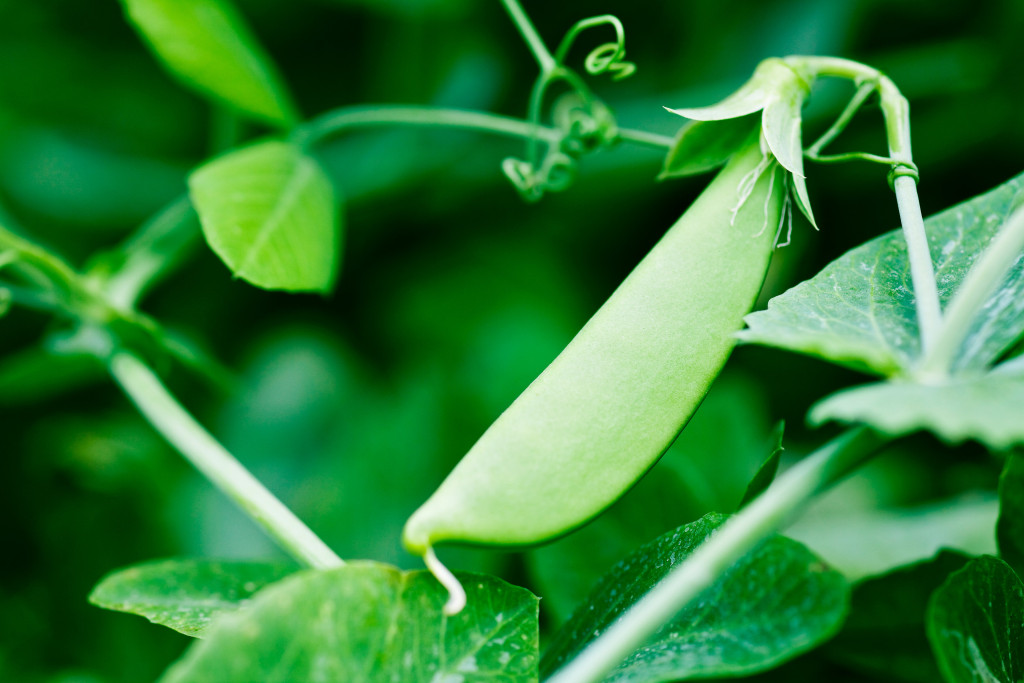from westcoastseeds.com
Recommendation: Little Marvel (PE605) is a compact, bushy pea variety that only grows a couple of feet tall. Then the pods come and they can be harvested over a window of about three weeks. The peas have a satisfying, fresh flavour and they freeze particularly well, so it’s an economical crop for winter use.
For Urban Gardeners: Surprise your guests by serving a salad of pea microgreens using Dwarf Grey Sugar (PE592). Harvest the seedlings at about 4 inches tall, while they are still tender and crunchy – try them with a simple vinaigrette dressing!
Timing
Peas prefer cool weather. Plant as early in spring as the soil can be worked, from mid-Feburary to the end of May. After April 1, sow varities that are listed as being enation resistant if you live in an area where aphids carry the enation virus. Sow again from July to mid-August for a fall crop. The success of a fall crop will depend on the weather. Optimal soil temperature: 10-20°C (50-70°F). Seeds should sprout in 7-14 days.
Starting
Soaking seeds is not advised for damp soils. Use a seed inoculant and sow seed 2cm (1″) deep. After April 15th, sow seed 5cm (2″) deep. Space seeds 2-7cm (1-3″) apart in the row. Do not thin. If the seeds fail to sprout, try to dig some up and check for rot or insect damage. The challenge with untreated pea seeds is to give them an early start but to avoid rot.
Growing
Use well-drained soil amended with finished compost. Add 2 cups of rock phosphate or bonemeal for 3m (10′) of row. Plant most varieties along a trellis or fence for support as they climb.
Harvest
Pick when pods fill out and peas are bright green. Make multiple sowings or grow several varieties to extend the harvest season.
Diseases & Pests
If plants turn yellow and wither from the ground up just after flowering, you have pea root rot from a soil fungus. It infects the plant in early spring when the soil is very wet. Prevent it by delaying planting until the soil is drier and by using finished compost when you plant. Rotate peas into new areas each year without repeating an area for 3-4 years. Pea enation disease is a Coastal virus disease spread by the green peach aphid. It ends flowering and causes pods to become warty and misshapen.
The pea moth is a sporadic and usually inconspicuous pest. The tiny brown moth flutters around when the flowers are just opening, and lays it eggs on the immature seed pod. The damage the caterpillar does not mean you can’t eat the rest of the peas in the pod. The larva is a tiny caterpillar with a black head, which feeds inside the seedpod and overwinters in the soil. There is one generation per year across Canada. In the pea-growing areas of the lower Fraser Valley in British Columbia, releases of two parasites have provided partially effective biological control. In general, processing and fresh-market pea crops should not be grown in areas with dry (seed) pea or seed vetch crops. After harvest, all remaining pods and vines should be destroyed by ensiling, feeding or deep cultivating.
Companion Planting
Superb companions for beans, carrots, celery, corn, cucumber, eggplant, parsley, peppers. potatoes, radish, spinach, strawberries and turnips. Avoid planting peas near onions.



No comments yet, be the first to leave one!
You must be logged in to post a comment.